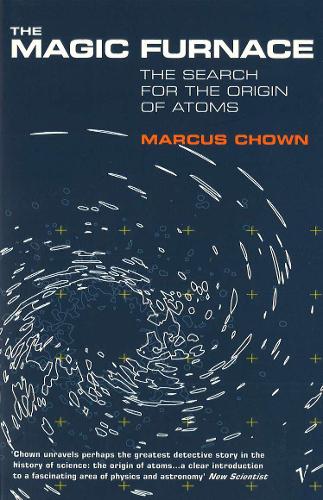
The Magic Furnace: The Search for the Origins of Atoms
(Paperback)
Publishing Details
The Magic Furnace: The Search for the Origins of Atoms
By (Author) Marcus Chown
Vintage Publishing
Vintage
15th August 2000
3rd August 2000
United Kingdom
Classifications
General
Non Fiction
Galaxies and stars
523.86
Physical Properties
Paperback
240
Width 129mm, Height 198mm, Spine 15mm
170g
Description
'An eminently readable piece of science history dealing with the quest to discover the nature of matter, recounted with a novelist's eye for character and suspense.' New Statesman Every atom in our bodies has an extraordinary history. Our blood, our food, our books, our clothes - everything contains atoms forged in blistering furnaces deep inside stars, which were blown into space by those stars' cataclysmic explosions and deaths. From red giants - stars so enormous they could engulf a million suns - to supernova explosions - the most violent events in the universe - the birth of every atom was marked by cosmic events on an enormous scale, against a backdrop of unimaginable heat and cold, brightness and darkness, space and time. But how did we discover the astonishing truth about our cosmic origins THE MAGIC FURNACE is Marcus Chown's extraordinary account of how scientists unravelled the mystery of atoms, and helped to explain the dawn of life. It is one of the greatest detective stories in the history of science. In fact, it is two puzzles intertwined, for the stars contain the key to unlocking the secret of atoms, and the atoms the solution to the secret of stars.
Reviews
A clear introduction to a fascinating area of physics and astronomy. Chown is to be congratulated on a beautifully crafted book. * New Scientist *
Keeps readers anxious for the next puzzle piece to fall into place. It reads like a Sherlock Holmes novel * Astronomy *
The work of a literary alchemist who tranmutes the iron of complexity into the gold of lucidity * The Tennessean *
The strength of The Magic Furnace is in the story. It never gets bogged down in scientific jargon * Sky & Telescope *
Author Bio
Marcus Chown is New Scientist's cosmology consultant. He is the author of Afterglow of Creation, which was runner-up for the Rh ne- Poulenc Science Book Prize, and was the winner of the 1994 Glaxo Wellcome ABSW Science Writers' Award.
